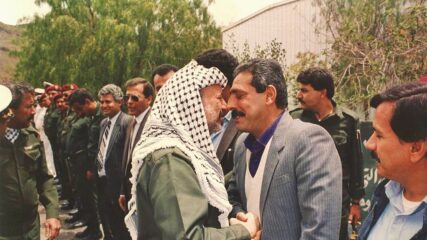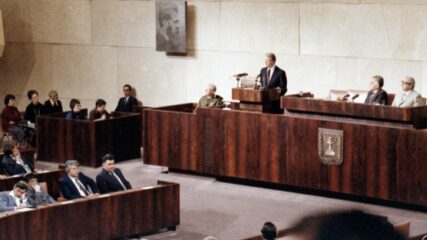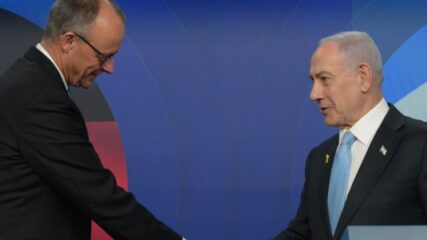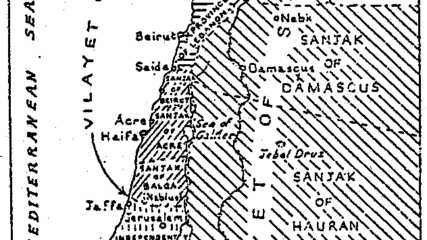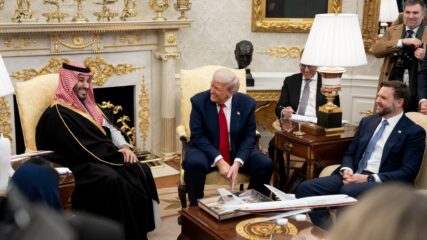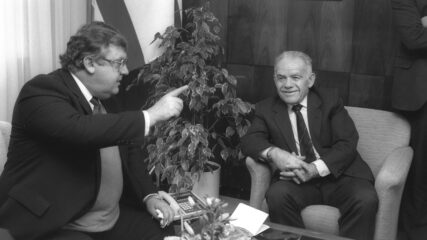Tomer Fadlon and Sason Hadad, INSS, June 25, 2019
With permission, read full article at INSS .
The economic workshop in Bahrain is the first part of the “deal of the century”; the political portion will apparently be presented only after the Israeli elections in September. The workshop in Bahrain leans heavily on Donald Trump’s political doctrine, whereby the economic power of the United States is the key to resolve economic, political, and social issues. However, a review of peace treaties that Israel has signed shows that the economy has consistently played only a secondary role, behind significant political solutions. The economic incentives were not the main channel of Israel’s peace treaties, but rather, a complement to the political channel. Therefore, despite the American desire to present a chiefly economic agenda for the Middle East, the success of the plans presented at the conference are tightly tied to the forthcoming political portion of the “deal of the century.”
Upon entering the White House in January 2017, President Donald Trump made clear in words and deeds that the optimal way for the United States to achieve its goals, including the resolution of confrontations and crises in the international sphere, was through its massive economic power. The means of implementing promises that were made on Trump’s campaign trail – to “make America great again” – is in large measure economic, and predicated on an American capacity to persuade actors in the international system to cooperate with the White House. From Trump’s perspective, economic power is multi-faceted and provides a remedy for most ills, be they political, social, or economic. The many trade wars that Trump has launched demonstrate his use of the economic weapon as a reward or remuneration for political conduct that matches the interests of the United States. A year ago, the administration withdrew from the nuclear deal with Iran and restored the harsh sanctions regime on Tehran, in order to deny Iran a possibility of achieving military nuclear capability. In late May, Trump threatened to raise tariffs incrementally on products originating in Mexico in the absence of more significant Mexican enforcement to prevent migration across the southern border of the United States. Now, the administration believes, the time has come to attempt a solution to the Israeli-Palestinian conflict through economic means.
On June 25-26, 2019, an international economic workshop will be held in al-Manama, the capital of Bahrain, titled “Peace to Prosperity,” where the United States will present the economic infrastructure for the “deal of the century” to resolve the Israeli-Palestinian conflict. A 40-page document issued by the White House suggests that the economic plan that will be presented is divided into three main components: maximizing Palestinian economic potential; creating a million jobs; and reducing Palestinian poverty levels by 50 percent – and all within one decade. The political portion of the plan will be presented separately, apparently after the September elections in Israel. In the Middle East context, as with other regions of the world, President Trump believes the economic weapon can bear fruit, i.e., the infrastructures will replace the rifles. The aim of the conference is to present to the countries of the region, to the Palestinians, and to global investors ways of transforming a Palestinian economy predicated on outside aid to one that has independent robustness, as well as to demonstrate the huge economic potential for economic prosperity within the Palestinian arena should peace be attained. The first tier of countries in the desired support network includes neighbors of the West Bank and the Gaza Strip, and the second tier, countries of the entire region. A related goal of the conference is to demonstrate to the Palestinians the cost inherent in a continuation of the conflict and in their rejection of the United States proposals.
In practice, the United States wants to use the conference to raise $50 billion that will be invested over 10 years in infrastructure, industry, human capital, job creation, and regional commerce – a kind of ecosystem of interaction, cooperation, and cross-fertilization. All of these are crucial for developing a Palestinian entity endowed with the essentials for prosperous economic independence. Thus, for example, the plan calls for an access road and rail line to connect the Gaza Strip and West Bank. Jared Kushner, the President’s son-in-law and adviser who is spearheading the “deal of the century,” said last month that economic progress would be achieved only with a firm economic outlook and if the core political foundations are addressed. It can be understood from his remarks that the economic aspects are meant to lure the Palestinians to compromise on other issues that are connected to their national aspirations. In other words, the economic plan is intended to benefit the Palestinians in every aspect of the standard and quality of life, and to encourage them to pressure their leadership to show flexibility on political-territorial issues, so as to remove familiar obstacles from the path to a political agreement.
A review of peace treaties that Israel has signed in the past suggests that economic aspects and United States economic power always constitute part of the peace dividends. However, economic issues and the role they played were always secondary to the pressing national and political issues. In Israel’s peace treaty with Egypt, the economic and civil annexes went mostly unimplemented. Article 2 of Annex 3 (Protocol Concerning Relations of the Parties) was devoted to economic and trade ties, and notes, “The Parties agree to remove all discriminatory barriers to normal economic relations and to terminate economic boycotts.” The second part of the article notes that the parties are obligated to conclude an agreement on trade for the purpose of promoting economic relations that will help preserve the peace. This article is the only one that notes economic relations between the sides, and of course was not sufficiently significant to lead the sides to a deal. What prodded Egypt toward peace was an economic crisis in Egypt due to mushrooming defense expenditures, and what enabled progress on the deal were American pledges of defense and economic guarantees in the form of annual economic aid. This has continued for the past 40 years, and is among the highest outlay in American foreign aid, second only to what is given to Israel. Egypt was in need of the American economic aid, but it should not be concluded from this that it was the economic issue that brought about a resolution to the conflict: rather, it was Israel’s full withdrawal from the Sinai Peninsula. Egyptian President Sadat declared that Egypt “would not give up on a grain of sand” of its territory, and so it was written in the peace treaty signed at the White House in March 1979. Even after four decades of peace, trade and economic cooperation between the countries is marginal, and the foundation for bilateral relations is security cooperation and American involvement in implementing the treaty (the multinational force in Sinai and the defense aid).
The 1993 Oslo Accords and the 1995 interim agreement with the Palestinians were also characterized by attention to many economic issues, but as with the treaty with Egypt, these were overshadowed by the core issues of the conflict. The IDF withdrawal from territories and the autonomy granted to the Palestinians constituted the solid ground on which the economic agreements between the sides were signed in Paris. In April 1994, economic relations were established under the Paris Protocol, which, for example, determined that Israel and the Palestinian Authority would serve as a single customs zone in which no duties would be paid on the transfer of goods. In other words, the agreement anchors the Palestinian economy’s dependency and reliance on Israel and does not grant it conditions for a workable independence. Furthermore, though the agreements were meant to be a significant economic incentive, they did not prevent the outbreak of violence when it appeared that the dialogue over political issues had run awry. Indeed, the second intifada, like the first, erupted when the economic situation in the territories was not particularly difficult.
The peace treaty with Jordan was perhaps exceptional among the three deals, because the issue of returning territory was secondary, and the economic support that Jordan secured in its wake played a more significant role in its advancement. Article 7 of the treaty details the economic relations between the countries and emphasizes the importance of the free flow of goods, non-discrimination, the prohibition of economic boycotts, and the importance of good neighborly relations. Yet Article 6 of the treaty is especially important, and details the water arrangements between the two countries. In addition, the United States undertook to forgive the debts of the Jordanian kingdom – something that served as another economic inducement for Jordan to reach a settlement with Israel. Despite that, the treaty of October 1994 would apparently not have been possible had it been signed within an economic framework alone. King Hussein’s main goal was to be freed, finally, of responsibility for the Palestinian issue, and he exploited the relatively amenable political climate created in the wake of the Oslo Accord. Most of the grand plans for economic cooperation between Israel and Jordan have gone unimplemented during the quarter century of peace, and as with the peace with Egypt, the main foundation of this peace rests is defense cooperation between the countries.
Therefore, with the publication of the economic component of the “deal of the century,” it is worth noting that peace treaties of which Israel is a signatory show emphatically how the economic dimension plays a part in the solution but is not the solution itself. One can similarly see in other peace treaties that were signed throughout history that economic considerations have been an incentive for continued negotiations, but their place has always been alongside political interests and issues of territory and nationalism that are far more urgent. The Trump administration’s attempt to reverse the priorities – first to build the field of dividends and later to present the political outline for an accord between Israel and the Palestinians – may be novel, but it is apparently not practical. Even before the workshop’s opening, most of the participating countries answered the administration’s appeals but have demonstrated a notable lack of desire to participate, nor are the participants from the senior echelons.
While a willingness to earmark huge investments in economy, infrastructure, education, health, and welfare in the West Bank and Gaza Strip should be good news and serve as part of the process for crafting a climate amenable to the advance of political objectives in the Israeli-Palestinian context, given the political and territorial rifts between Israel and the Palestinians, as well as the poor performance of Palestinian governance (including the schism between the West Bank and Gaza Strip) what is also required is a political plan that is both creative and beneficial to the Palestinians. Historical examples attest that the Bahrain workshop and the investments planned for the future should not be seen as a key to the resolution of a conflict that goes back many years.



